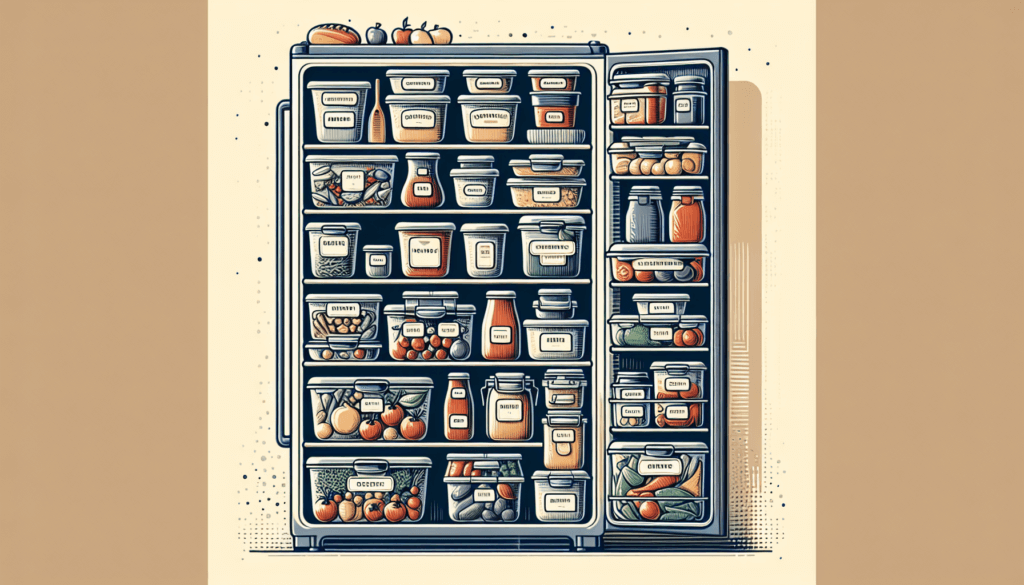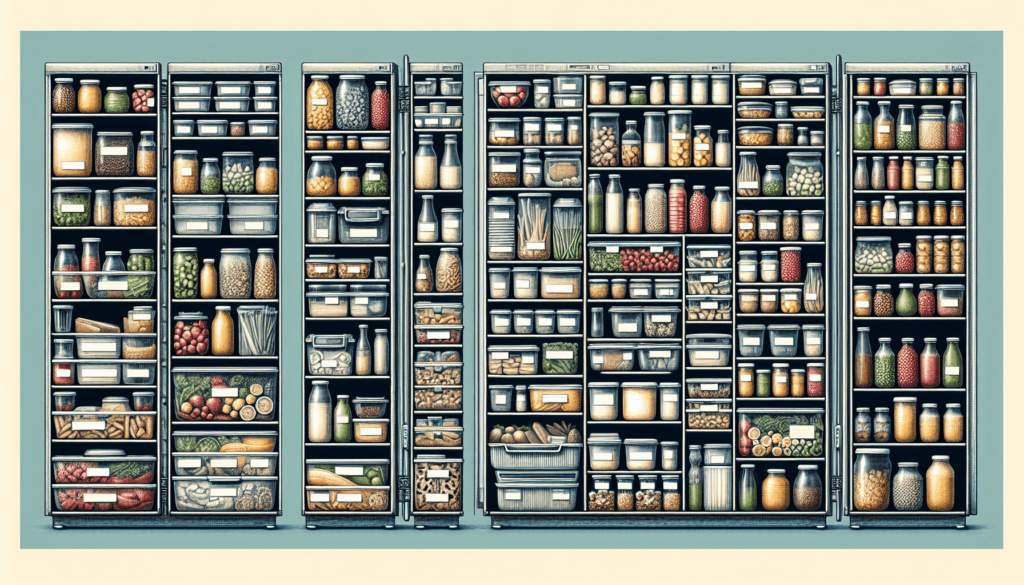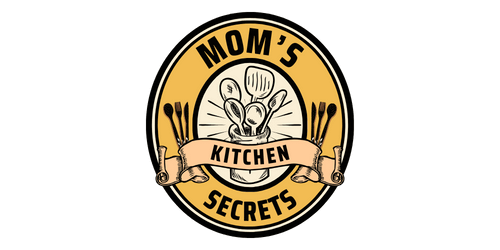In today’s fast-paced world, where busy schedules often leave us with little time to cook fresh meals every day, leftovers have become a lifesaver. However, if not stored correctly, leftovers can lose their taste, texture, and even pose health risks. That’s why it’s essential to understand the proper way to store leftovers to ensure their longevity and maintain their deliciousness. From organizing your refrigerator to using airtight containers, this article will provide you with valuable tips and tricks to keep your leftovers fresh and safe to eat. So, say goodbye to spoiled food and hello to mouthwatering meals even after they’ve been enjoyed once before!
Choosing the Right Storage Containers
When it comes to storing leftovers, choosing the right storage containers is essential to maintain their freshness and quality. One important factor to consider is using airtight containers. These containers create a seal that prevents air from entering the container, keeping your leftovers fresh for a longer period of time. Airtight containers also help prevent odors from spreading to other foods in your refrigerator or freezer.
On the other hand, it is best to avoid using plastic wrap to store leftovers. Plastic wrap tends to cling to food, making it difficult to remove without causing a mess. Additionally, plastic wrap can easily tear or puncture, compromising the integrity of your leftovers and potentially exposing them to air and bacteria.
Instead, opt for glass or BPA-free plastic containers. Glass containers are durable and non-toxic, making them a safe choice for storing leftovers. They are also transparent, allowing you to easily identify the contents of each container. BPA-free plastic containers are a lighter and more affordable alternative to glass containers. Just make sure that the plastic containers you choose are labeled BPA-free to ensure they are safe for food storage.
Properly Cooling and Handling Leftovers
Properly cooling and handling leftovers is crucial to prevent the growth of harmful bacteria and keep your meals safe to eat. One important step is allowing food to cool before storing it. Placing hot food directly into the refrigerator can increase its temperature and cause the surrounding food to warm up as well, compromising its safety. Instead, let your leftovers cool on the countertop for a short period of time before transferring them to airtight containers.
If you have a large portion of leftovers, it is best to divide them into smaller containers. This not only helps with portion control but also allows the food to cool down faster in the refrigerator. By dividing large portions, you can also easily grab a single serving when you’re ready to eat without having to thaw or reheat the entire batch.
It is crucial to avoid leaving leftovers at room temperature for more than 2 hours. Bacteria can grow rapidly in the “danger zone” temperature range of 40°F (4°C) to 140°F (60°C). Within this range, bacteria multiply at a rapid pace, increasing the risk of foodborne illnesses. To prevent this, refrigerate or freeze your leftovers promptly after they have cooled down.

Storing Different Types of Leftovers
When it comes to storing different types of leftovers, it is important to consider the specific needs of each food group.
For meat and poultry leftovers, it is best to store them in airtight containers in the refrigerator. These leftovers can typically last for 3-4 days if properly stored. If you don’t plan on consuming them within that timeframe, it’s recommended to freeze them for longer storage.
Fish and seafood, on the other hand, are more delicate and should be consumed within 1-2 days of being cooked. Like meat and poultry, they should be stored in airtight containers in the refrigerator. Freezing fish and seafood can be done, but it may affect the texture and flavor, so it’s best to consume them fresh.
Dairy products, such as milk, cheese, and yogurt, should be stored in their original packaging whenever possible. If the original packaging is not airtight, transfer the leftovers to airtight containers to maintain their freshness. These leftovers should be consumed within their expiration dates.
For soups and stews, storing them in airtight containers in the refrigerator is the way to go. These leftovers can typically last for 3-4 days if stored properly. To extend their shelf life, freezing is an option.
Breads and baked goods can be stored in a dry and cool place, such as a bread box or pantry. To maintain freshness, keep them away from moisture and heat sources. However, if you have a large quantity of bread or baked goods that you won’t consume within a few days, freezing them can be a good option.
When it comes to storing vegetables, it is best to store them in the refrigerator in airtight containers or produce bags. Some vegetables, such as leafy greens, may benefit from being stored in a slightly moist environment to prevent wilting. Ensure that you remove any excess moisture or condensation from the bags or containers before storing.
Fruits can be stored at room temperature or in the refrigerator, depending on their ripeness and preference. For ripe fruits, it is best to consume them within a few days. If you have excess fruits that won’t be consumed in time, consider freezing them for later use in smoothies or desserts.
Rice and pasta should be stored in airtight containers in the refrigerator. These leftovers can typically last for 3-4 days if stored properly. It’s important to note that reheating rice can be risky, as it has been associated with food poisoning. Make sure to reheat rice thoroughly to kill any potential bacteria.
Sauces and condiments are generally high in acidity or have added preservatives, which help prolong their shelf life. However, it is still important to store them in airtight containers in the refrigerator to maintain their quality. Always check the expiration date and discard any sauces or condiments that show signs of spoilage.
Labeling and Dating Containers
Labeling and dating your leftover containers is key to staying organized and ensuring that you consume them within a safe timeframe. Use labels to identify the contents of each container, especially if you have a variety of leftovers in your refrigerator or freezer. Knowing what’s inside without opening the container can save you time and prevent waste.
In addition to labeling the contents, it is important to include the date of storage. This allows you to keep track of how long each leftover has been stored and prioritize consuming them in the proper order. By following the “first in, first out” (FIFO) rule, you can avoid keeping leftovers for too long and reduce food waste.
Avoid keeping leftovers for an indefinite period of time. While some foods can be stored for extended periods in the freezer, their quality and taste may deteriorate over time. Most leftovers are best consumed within a few months to ensure optimal taste and safety.

Storing Leftovers in the Refrigerator
Properly storing leftovers in the refrigerator is crucial to maintain their freshness and prevent the growth of harmful bacteria. Here are some tips to help you store leftovers effectively:
First, check the temperature of your refrigerator to ensure it is set below 40°F (4°C). This is the recommended temperature to slow down the growth of bacteria. Monitoring and adjusting the temperature regularly will help maintain the quality and safety of your leftovers.
When storing leftovers in the refrigerator, use the correct refrigerator shelves. Raw meats and poultry should be stored on the bottom shelf to prevent their juices from dripping onto other foods and causing cross-contamination. Cooked foods and leftovers should be stored on the upper shelves to keep them away from potential contaminants.
It is crucial to store raw and cooked foods separately to prevent the spread of bacteria. Raw meats, poultry, and seafood should be stored in airtight containers or sealed plastic bags to prevent their juices from coming into contact with other foods. This helps maintain the integrity and quality of both raw and cooked foods.
Ensure that liquids, such as soups, sauces, and dressings, are tightly sealed in their containers to prevent leakage and maintain their freshness. Liquids can easily contaminate other foods if spilled or leaked, so it is important to double-check their seals before storing them.
Avoid overcrowding the refrigerator to allow proper air circulation. Overcrowding can lead to uneven cooling and increase the risk of food spoilage. Ensure that there is enough space between containers to allow cool air to circulate and maintain a consistent temperature.
Storing Leftovers in the Freezer
Freezing leftovers is a great way to extend their shelf life and have quick and convenient meals on hand. To properly store leftovers in the freezer, follow these guidelines:
Package and wrap leftovers properly to protect them from freezer burn and odor absorption. Opt for airtight containers or freezer-safe bags to keep the food fresh and prevent moisture loss. Ensure that there are no air pockets or openings where air can enter, as this can affect the quality of the leftovers.
Use freezer-safe containers or bags specifically designed for freezing. Regular plastic containers or bags may not be able to withstand the extreme temperatures of the freezer, leading to freezer burn or food spoilage. Freezer-safe containers are usually made of thicker, more durable materials that provide better insulation.
Remove excess air from containers before sealing them. Air contains moisture, and excess moisture can lead to freezer burn. Squeeze out any excess air from bags or containers to ensure the best quality of your frozen leftovers.
Label and date the packages to keep track of their contents and storage duration. Proper labeling allows you to easily identify what’s inside without thawing or opening the package. It also helps you consume the oldest packages first, following the FIFO rule.
Follow the recommended freezing times for different types of leftovers. While most leftovers can be safely frozen for 2-3 months, there are variations depending on the type of food. Refer to food storage charts or reputable sources for specific freezing times and guidelines.

Safe Thawing and Reheating of Leftovers
Thawing and reheating leftovers properly is essential to maintain their taste and safety. Here are some methods to safely thaw and reheat your leftovers:
Thawing leftovers in the refrigerator is the safest method. Simply transfer the frozen leftovers from the freezer to the refrigerator and allow them to thaw slowly. This method helps maintain the integrity of the food and prevents the growth of harmful bacteria.
If you need to thaw leftovers quickly, thaw them in cold water. Place the frozen package in a leak-proof plastic bag and submerge it in cold water. Change the water every 30 minutes to maintain a safe temperature. Do not use hot water, as it can promote bacterial growth.
The defrost function on the microwave is another quick thawing method. Follow the manufacturer’s instructions for your specific microwave model. Make sure to transfer the food to a microwave-safe container before reheating.
When reheating leftovers, it is important to heat them to the proper temperature. Use a food thermometer to ensure that the internal temperature reaches at least 165°F (74°C) to kill any bacteria that may have grown during storage. Stir or rotate the food while reheating to ensure even heating and prevent cold spots.
Determining the Shelf Life of Leftovers
Knowing when to discard leftovers is crucial to prevent foodborne illnesses and maintain food quality. Here are some ways to determine the shelf life of leftovers:
Consult food storage charts or reputable sources for specific guidelines on the shelf life of different types of leftovers. These charts provide recommendations on how long different foods can be safely stored in the refrigerator or freezer.
Trust your senses when assessing the freshness of leftovers. If leftovers smell off, have an unusual texture, or show signs of mold or discoloration, it is best to discard them. Never take chances with leftovers that appear spoiled or expired.
Do not consume expired leftovers. Check the expiration dates on your food packages and discard anything that is past its recommended shelf life. Eating expired food can lead to food poisoning and other health issues.
When in doubt, err on the side of caution and discard leftovers that you are unsure about. It is always better to be safe than sorry when it comes to food safety.

General Tips for Storing Leftovers
Here are some general tips to help you store leftovers effectively:
Avoid storing hot food directly in the refrigerator. Allow hot food to cool down before transferring it to storage containers to prevent the temperature of the refrigerator from rising and compromising the safety of other foods.
Store each type of food separately to avoid cross-contamination. This is especially important for raw meats, poultry, and seafood, which can carry harmful bacteria. Keep them in separate containers, preferably with airtight seals, to prevent their juices from coming into contact with other foods.
Keep the storage area clean and organized to prevent contamination and maintain food safety. Regularly clean and sanitize your storage containers, shelves, and refrigerator to remove any potential bacteria. Arrange containers neatly and don’t allow them to touch each other to ensure proper air circulation.
Do not store leftovers near raw foods to avoid the risk of cross-contamination. Raw foods can contain harmful bacteria that can spread to your leftovers if they are stored in close proximity.
Adhere to storage guidelines and recommendations to ensure the safety and quality of your leftovers. Each food group and type of leftovers may have specific requirements, so it’s important to follow the recommended storage methods for optimal results.
Creative Ways to Use Leftovers
If you find yourself with an abundance of leftovers, consider getting creative and repurposing them into new meals. Here are some ideas to make the most out of your leftovers:
Repurpose leftovers into new meals by combining them with fresh ingredients. For example, leftover roasted chicken can be transformed into a delicious chicken salad by adding fresh lettuce, tomatoes, and a flavorful dressing.
Make one-pot dishes or casseroles by combining different types of leftovers in a single dish. This allows you to create a flavorful and satisfying meal with minimal effort. Leftover vegetables, meats, and grains can be combined with some broth or sauce to make a tasty casserole.
Create salads or sandwiches with leftover meats, vegetables, and grains. Chop up leftover grilled vegetables, add some cooked quinoa or rice, and toss with a tangy vinaigrette for a refreshing salad. Leftover roasted meats can be thinly sliced and used to make sandwiches with some fresh greens and condiments.
Blend leftovers into soups or smoothies for a quick and nutritious meal. Leftover roasted vegetables can be pureed with some vegetable broth to make a tasty soup. Leftover fruits can be blended with yogurt and a splash of juice to create a refreshing smoothie.
Donate excess leftovers to food banks or local charities. If you have more leftovers than you can consume, consider donating them to those in need. Food banks and charities can help ensure that the food doesn’t go to waste and benefits the community.
By following these tips, you can ensure that your leftovers are stored properly, minimizing waste and maximizing their taste and safety. So next time you have leftovers, put these practices into action and enjoy delicious meals with peace of mind.



